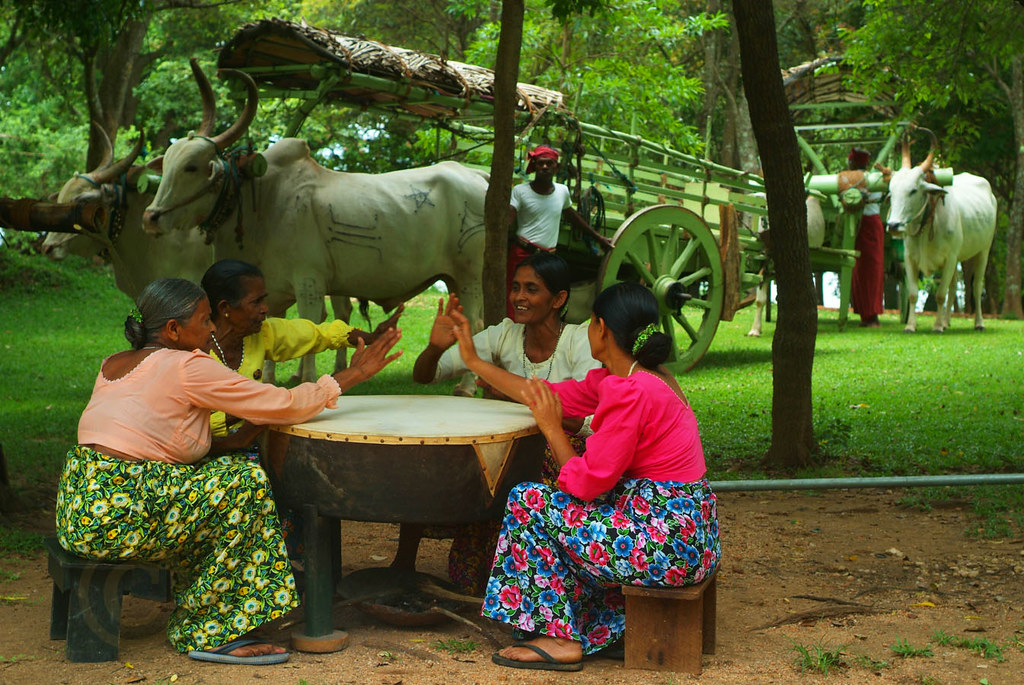Posted on January 05, 2025 at 01:09 PM in Festivals by Administrator

Every April, Sri Lanka, with stunning scenery and a rich cultural legacy, transforms into a joyous celebration of the Sinhala and Tamil New Year, called locally as "Aluth Avurudu." The harvest season comes to an end with this spectacular occurrence, which also signifies the sun's passage from the Pisces to the Aries sign. Authentically capturing the essence of Sri Lankan culture, tradition, and celebration.
The New Year's Significance
More than merely a holiday, the Sinhala and Tamil New Year is a well-balanced fusion of family get-togethers, religious rites, and cultural customs. It represents wealth and the thanks given to the Sun God for a prosperous crop in the Sinhala society. It falls on the same day as the Tamil community's "Puthandu," or traditional New Year. These festivities collectively represent the diversity and togetherness of Sri Lanka's multicultural community.
Preparations Before the Festival
Sri Lankan households are busy with activities in the weeks leading up to the New Year. To start the New Year off fresh and upbeat, families clean and decorate their houses, frequently repainting walls and polishing floors. Mango leaves, traditional oil lamps, and vibrant "kolam" (rangoli) patterns are utilized to decorate homes, fostering a festive and cozy ambiance. Markets are bustling with people purchasing gifts, home goods, and new clothing.
This is a fun time for tourists to visit busy local marketplaces that are loaded with fresh fruit, traditional sweets, and colorful fabrics. You'll see how the cities and villages on the island change into vibrant centers of activity and excitement.
Customs and Good Times
Astrology plays a significant role in the celebrations of the Sinhala and Tamil New Years. Every task, including lighting the fireplace and cooking the first meal, is carried out at an auspicious time known as "nekatha," which is decided by astrology. It is customary to abstain from all employment during the transitional phase, sometimes referred to as the "neutral period" or "nonagathaya," and instead devote time to meditation and religious pursuits.
You will have the chance to participate in these customs as a visitor. Join a local family to participate in the custom of boiling milk, a symbol of prosperity, or visit temples to observe devotees praying.
Usual New Year's Food
A major component of the New Year's festivities is food. Every home's table is adorned with traditional sweets like "ariya" (milk rice), "kevum" (oil cakes), "pani walalu" (honey rings), and "kokis" (crispy rice flour snacks). Every treat has symbolic and cultural meaning.
This is a best opportunity as a tourist to savor a variety of genuine Sri Lankan cuisine. Where it gives a chance to discover the techniques behind these delectable dishes by attending one of the many culinary demonstrations offered by hotels and homestays. A New Year's traditional, milk rice is served with freshly brewed "katta sambol," or spicy onion relish. Don't miss the opportunity to sample it.
Common Games and Celebrations
The variety of traditional games and events that unite communities is one of the most enjoyable parts of the Sinhala and Tamil New Year. These games, which range from pillow battles and tug-of-war to coconut scraping contests, are full of good humor and healthy rivalry. Both parents and children enthusiastically engage, creating a feeling of excitement and togetherness.
Participation in these programs is always appreciated from visitors. It's an experience unlike any other some of them are, shatter a clay pot while wearing a blindfold, balancing on a greasy pole!
Music and Cultural Performances
Sri Lanka comes alive with folk singing, traditional drumming, and dancing throughout the New Year. The sight of ladies gathering around big drum "Rabana" and drumming.
During this time, a number of cultural centers and tourist-friendly locations hold unique performances, giving visitors a close-up look at Sri Lanka's rich cultural legacy.
Connecting Through Fresh Starts
The value of family and community is emphasized throughout the Sinhala and Tamil New Years. Families share meals and gifts, while elders bestow wealth and wisdom on younger members. Additionally, it's a time to resolve conflicts and begin anew, strengthening ties and promoting optimism.
The gracious hospitality of the Sri Lankan people guarantees that visitors are not merely spectators but are invited to take part in these private celebrations of happiness and togetherness.
A Tour in Sri Lanka During the Holidays
Exploring Sri Lanka's natural beauty and historical sites is made possible by the New Year's celebrations. Visit famous locations like the Temple of the Tooth in Kandy, the Sigiriya Rock Fortress, or the golden beaches of Mirissa to round off the joyous occasions. Numerous tour companies provide thoughtfully planned New Year's packages that guarantee the ideal balance of custom and excitement.
Rural settlements also provide a more tranquil and genuine New Year’s experience. The festive spirit and the rustic beauty of these places combine to create a memorable environment.
Why Travel to Sri Lanka in the Tamil and Sinhala New Years?
The Sinhala and Tamil New Year is more than just a holiday; it's a cultural event that provides an unmatched window into Sri Lankan customs and hospitality. The New Year's celebrations offer lifelong memories, whether you're a couple on a romantic retreat, a family searching for unusual experiences, or a lone traveler seeking cultural immersion.
Visit to Sri Lanka in April. Savor delectable sensations, celebrate fresh starts, and write tales you will always treasure. The island welcomes with wide arms and a joyful heart!